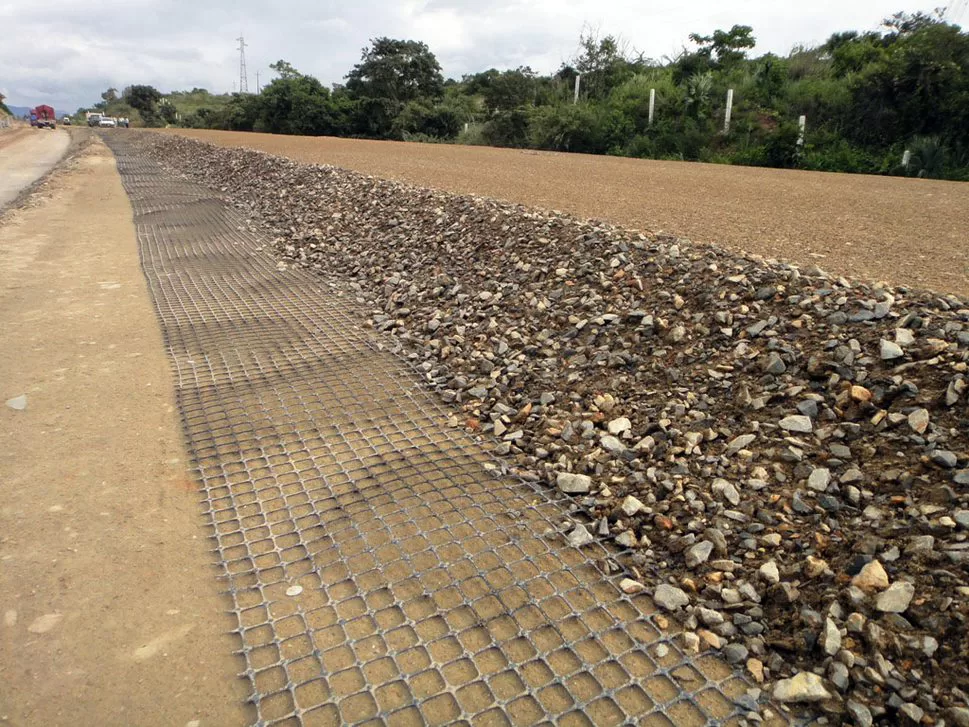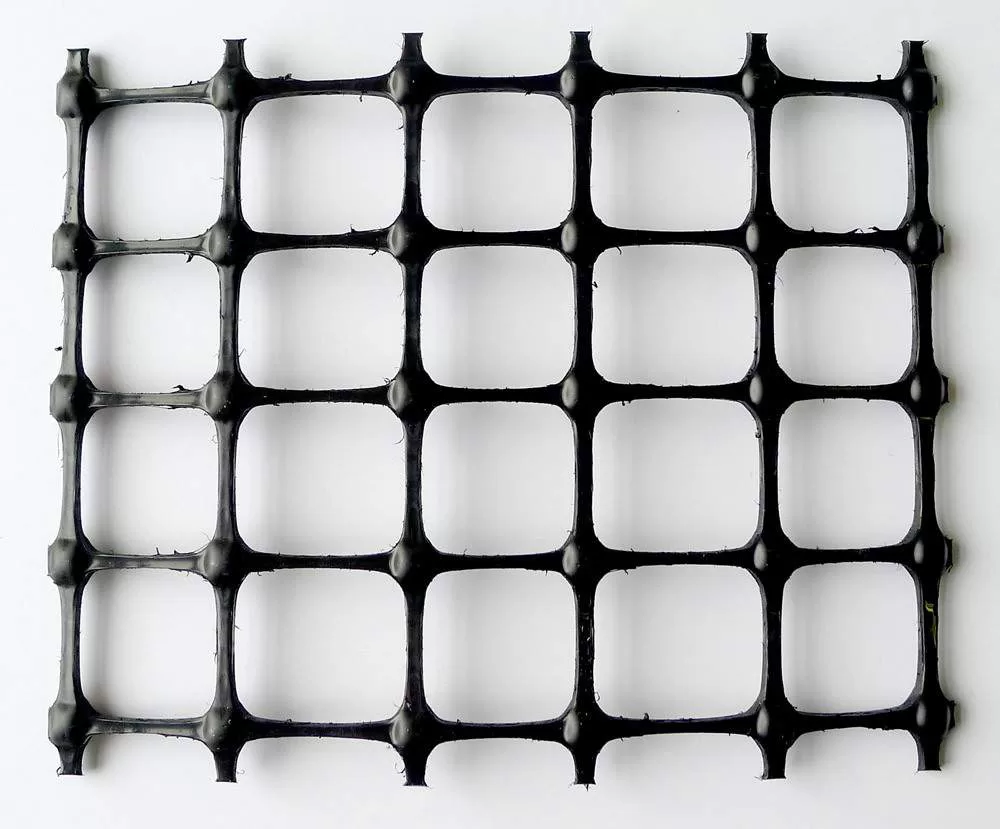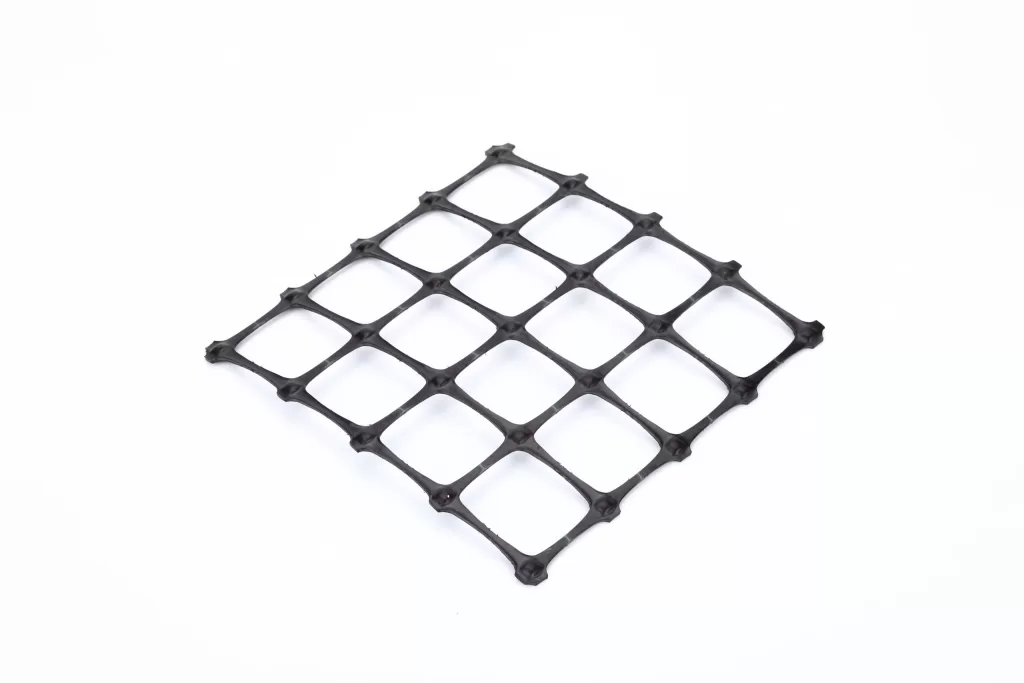+86-159 9860 6917
info@geofantex.com
geofantex@gmail.com
+86-400-8266163-44899
Geogrid is a crucial component in civil engineering and construction projects, known for its ability to reinforce soil structures and enhance stability. This article explores the workings of geogrid, its applications, installation methods, and compatibility with various materials, by interlocking with the granular or soil material placed over them.

How does a geogrid work?
Geogrid works by distributing loads over a wider area of soil, effectively increasing the soil’s bearing capacity. It reinforces weak soils by interlocking with them, creating a stable platform that can support heavy loads such as roads, retaining walls, and embankments. This interaction prevents soil movement and enhances structural integrity. Geogrids have openings, called apertures, which allow the aggregate to strike through and provide confinement and interlock, further enhancing their ability to stabilize and reinforce soil structures.
Does Geogrid work with sand?
Geogrid works by distributing loads over a wider area of soil, effectively increasing the soil’s bearing capacity. It reinforces weak soils by interlocking with them, creating a stable platform that can support heavy loads such as roads, retaining walls, and embankments. This interaction prevents soil movement and enhances structural integrity. Geogrids have openings, called apertures, which allow the aggregate to strike through and provide confinement and interlock, further enhancing their ability to stabilize and reinforce soil structures.
Can you use geogrid in concrete?
Geogrid works by distributing loads over a wider area of soil, effectively increasing the soil’s bearing capacity. It reinforces weak soils by interlocking with them, creating a stable platform that can support heavy loads such as roads, retaining walls, and embankments. This interaction prevents soil movement and enhances structural integrity. Geogrids have openings, called apertures, which allow the aggregate to strike through and provide confinement and interlock, further enhancing their ability to stabilize and reinforce soil structures.
How is Geogrid installed?
Geogrid installation involves several key steps: preparing the soil surface, placing the geogrid material, anchoring or securing it to the ground, and covering it with additional layers of soil or aggregate. The installation method varies based on the specific application and site conditions but generally aims to maximize the grid’s effectiveness in stabilizing the soil. When placing the geogrid material, roll it out and allow it to follow the natural contours of the ground, ensuring proper alignment and coverage for optimal performance.
In summary, geogrid is a versatile geosynthetic material that enhances soil stability and structural integrity in various construction projects. By understanding how geogrid works, its compatibility with different materials like sand and concrete, and proper installation techniques, engineers and contractors can effectively utilize geogrid to achieve durable and sustainable infrastructure solutions.



Get Free Sample
We’ll respond as soon as possible(within 12 hours)






















